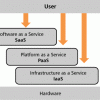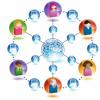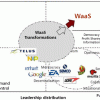Business Transformation Requires Transformational Leaders
Leadership and teaming skills are front and center in times of rapid change. Meet today’s constant disruption head on with expert guidance in leadership, business strategy, transformation, and innovation. Whether the disruption du jour is a digitally-driven upending of traditional business models, the pandemic-driven end to business as usual, or the change-driven challenge of staffing that meets your transformation plans—you’ll be prepared with cutting edge techniques and expert knowledge that enable strategic leadership.
Recently Published
This Update explores the enterprise's need to go beyond the firewall to enhance customer satisfaction, increase revenue, and maintain a competitive edge.
Business craftsmanship is concerned with organizational transformation and enlightenment. It can loosely be thought of as a framework -- and certainly utilizes one -- but "framework" is not quite the right term to describe this approach as the term implies stability, and usually a clearly defined set of rules. Scrum is a good example of an organizational framework. It has well-defined components, namely roles, meetings, artifacts, and values.
2013 Predictions on Collaboration: Part II
Here in Part II, we introduce a business-IT architecture transformation framework. The framework provides a comprehensive approach to addressing business-IT misalignment.
Left to Their Own Devices
The "consumerization of IT" is a catchy term for a sneaky trend that has been going on for at least 10 years, in which consumer devices and applications are increasingly incorporated into the workplace.
2013 Predictions on Collaboration: Part I
Systems of Engagement: Part I -- Understanding the Big Picture
There has been a lot of noise in the application development area around what are being called "systems of engagement." In this Executive Update series, we will explore this newfound principle and what architects must contemplate in order to foster improved enterprise efficiency and innovation.











